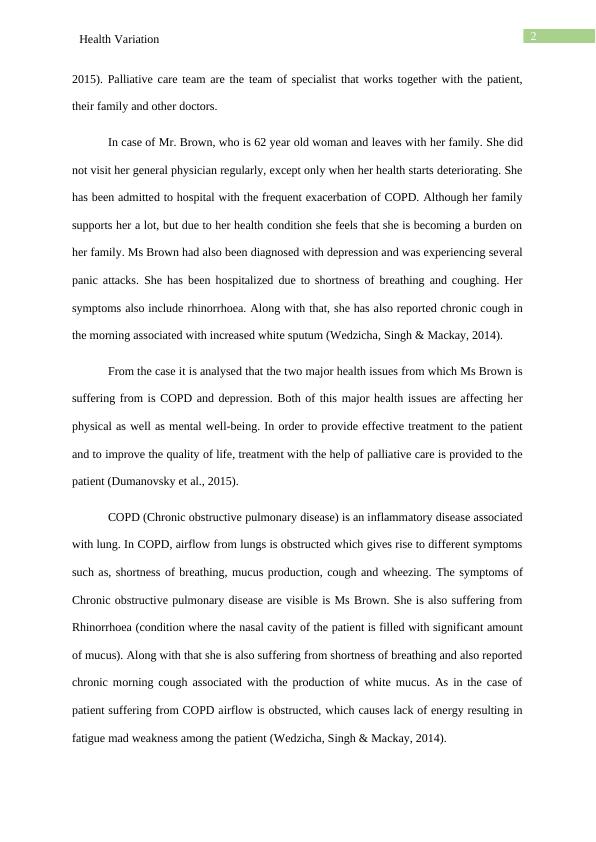Palliative Care for COPD and Depression
8 Pages2128 Words34 Views
Added on 2023-01-18
About This Document
This assignment discusses the importance of palliative care in managing COPD and depression. It explores the case study of Mrs. Brown and provides interventions and treatments for better health outcomes. The focus is on COPD symptoms, such as shortness of breath and chronic cough, and the impact of depression on the patient's overall well-being.
Palliative Care for COPD and Depression
Added on 2023-01-18
ShareRelated Documents
End of preview
Want to access all the pages? Upload your documents or become a member.
Palliative Care for COPD Patients: Nursing Assignment
|8
|2003
|406
Nursing | Assignment Sample
|6
|1640
|218
Palliative Care: Nursing Strategies for Shortness of Breath and Social Isolation
|8
|1756
|409
Palliative Care for Mrs. Brown: Nursing Priorities in COPD
|7
|1773
|28
Palliative Care: Nursing Priorities and Interventions
|7
|1806
|71
Palliative Care Approach: Case Study
|7
|1595
|456



